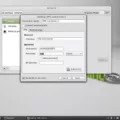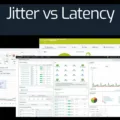Network administrators often have the challenge of managing IP addresses in their networks. To make efficient use of available IP address space, Variable Length Subnet Masks (VLSM) are used in modern networks. VLSM allows administrators to use different subnets for different requirements within a single Class A, B or C network. This approach allows efficient allocation of IP address space and is also known as Classless Inter-Domain Routing (CIDR).
Using VLSM, internetwork can break up a single class of an IP address into multiple subnets with varying masks. For example, a Class A network 10.0.0.0 can be divided into two subnets: 10.0.0.0/30 and 10.0.1.0/24 (see Figure 22-1). The /30 mask allocates only four usable hosts while the /24 mask allocates 254 usable hosts. This way, the administrator can allocate more addresses for larger requirements and fewer for smaller ones – making efficient use of the available address space in the network.
In addition to making efficient use of address space, VLSM also makes routing more efficient by reducing the size of routing tables which are propagated across routers that use Open Shortest Path First (OSPF) protocol for communication between them. By using areas, OSPF networks can be logically segmented to decrease the amount of routing table updates that need to be sent across the network – thus improving the performance and scalability of OSPF networks.
VLSM is an important tool for network administrators who want to make efficient use of their available IP address space while improving routing efficiency and scalability in their networks by using OSPF protocol with areas support enabled on routers communicating with each other in their network environment..

Understanding VLSM with an Example
VLSM (Variable Length Subnet Masking) is a way of subnetting a network that allows for different prefix lengths, or masks, to be used within the same network. This provides more flexibility and helps conserve addresses by allocating them more efficiently.
For example, consider a Class A network 10.0.0.0 with subnets 10.0.0.0/23 and 10.0.2.0/24, as shown in the diagram below:
Calculating VLSM
VLSM (Variable Length Subnet Mask) is a method used to allocate IP addresses more efficiently. To calculate VLSM subnets, you need to first determine the number of bits necessary for each subnet and the size of each subnet. You can do this by listing the requirements from largest to smallest and then using the appropriate number of bits for each. For example, if Perth requires 60 hosts, you would use 6 bits (26 – 2 = 62 usable host addresses).
Next, you need to determine the subnet mask for each subnet. This can be done by counting the number of bits used for each subnet and adding them together. For example, if 3 bits were used for one subnet and 4 were used for another, your total would be 7. The corresponding subnet mask would be 255.255.255.128 (11111111 11111111 11111111 10000000).
Once you have determined the size and mask of each subnet, you can calculate the range of IP addresses for each one by finding its network address and broadcast address. To do this, take your starting IP address (or 0s if unspecified) and apply your binary mask to it; this will give you your network address and all numbers between it and the broadcast address is valid IPs that can be assigned within that network range.
Finally, remember that when calculating VLSM it is important to ensure that all networks within a given range are compatible with one another in terms of both size and masked address ranges so they are able to communicate with each other without issue.
The Relationship Between VLSM and CIDR
No, VLSM and CIDR are not the same. VLSM stands for Variable Length Subnet Masking and is a technique used to partition an IP address space into subnets of different sizes. CIDR, on the other hand, stands for Classless Inter-Domain Routing and is a method of allocating IP addresses that uses variable-length subnet masks (VLSM). Both techniques use the same mechanism of efficiently dividing up an IP address space, but they are not interchangeable.
VLSM allows networks to have different-sized subnets while still using the same IP addressing scheme. This allows more efficient use of network resources by making it possible to assign specific amounts of IP addresses to each host or network segment depending on its size.
CIDR is a method for allocating IP addresses that use VLSM by assigning each network segment a specific size based on its needs. It also allows for better aggregation of routes in routers, which makes routing more efficient. This helps reduce the size of routing tables used by ISPs, which in turn reduces traffic on their networks and improves overall performance.
Understanding VLSM in OSPF
Variable Length Subnet Masks (VLSM) is a feature of OSPF that allows for different subnet masks to be used within the same network. It enables a network administrator to break up a large network into smaller subnets, thus allowing for more efficient use of IP address space. VLSM provides more control by allowing the administrator to create separate groups of networks with different sizes and different subnets. This allows for higher flexibility in addressing and routing traffic, which can help optimize the routing table size and improve performance. Additionally, VLSM also makes it easier to maintain the network because changes can be made at the subnet level instead of at the entire network level.
The Use of Variable Length Subnet Masking (VLSM)
VLSM is used for optimizing the use of IP addresses in a network. It allows for the subnetting of a single IP address space into multiple networks, each with its own individual mask. This allows for more efficient use of the available IP addresses, as it enables network engineers to assign different masks to different subnets within an address space, allowing for finer control over routing and traffic on the network. Additionally, VLSM helps to reduce congestion in larger networks by allowing administrators to create separate subnets that are optimized for specific services or applications.
The Purpose of VLSM
The main purpose of Variable Length Subnet Masking (VLSM) is to enable more efficient use of IP address space. VLSM allows network administrators to divide an existing subnet into multiple smaller subnets with varying sizes. This allows for better distribution of IP addresses and enables a network to use available IP addresses more efficiently. In addition, VLSM can be used to create networks with different levels of security, allowing for more secure subnets within the same network. By using VLSM, network administrators can also reduce the amount of manual address configuration required when adding new hosts or services to the network.
The Impact of VLSM on the CCNA
Yes, Variable Length Subnet Masks (VLSM) are a part of the Cisco Certified Network Associate (CCNA) exam. VLSM is an important networking concept that allows network administrators to break up a single large network into multiple smaller subnets of different sizes. This allows more efficient use of IP addresses and can make it easier to control access and traffic flow within a network. On the CCNA exam, you will be expected to understand how VLSM works and be able to implement it in various scenarios.
Understanding IP Address Classes and VLSM
IP address classes VLSM (Variable Length Subnet Masking) is a technique used to divide a network into smaller subnets of different sizes, allowing for better allocation of address space and more efficient routing. It allows for more flexible use of IP addresses by allowing each subnet to be assigned a different size. This means that the size of each subnet can be adjusted depending on the need, allowing for more efficient use of available address space. IP classes VLSM also allows networks to accommodate changes in their topology without having to change the entire network’s IP addressing scheme. This makes it highly beneficial for large networks with complex topologies, as they can adjust their addressing scheme as needed without needing to reconfigure their entire network.
Subnetting a VLSM
Subnetting a VLSM network is a relatively straightforward process. To begin, you will need to make a list of the subnets that are required, and then sort the requirements of IP addresses in descending order (highest to lowest).
Once this is complete, you can start allocating the highest range of IPs to the highest requirement. For example, if the highest requirement is for 100 IPs, assign 192.168.0.0/24 as the first subnet.
For the next highest requirement, allocate another subnet with the next highest range. In this example, you would assign 192.168.1.0/24 as the second subnet and so on until all of your requirements have been met.
It’s important to keep in mind that VLSM networks require more planning than traditional static networks as each subnet has different IP address ranges and requires careful allocation of resources and addressing plans.
Once you’ve allocated all of your required subnets, ensure that your VLSM network is functioning correctly by pinging devices on different subnets and verifying that they are reachable from one another. This is an essential step in ensuring that your network is properly configured and working correctly.
The Efficiency of VLSM Compared to CIDR
VLSM (Variable Length Subnet Masking) is more efficient than CIDR (Classless Inter-Domain Routing) as it allows network administrators to create subnets of different sizes within a single network. This provides the flexibility to assign only the required number of IP addresses to each subnet, thus maximizing the utilization of the available IP address space.
CIDR is used for reducing the routing information carried by core routers by combining multiple routes into one. This helps in minimizing the size of routing tables, however, it does not optimize address space utilization efficiently as compared to VLSM.
VLSM enables better utilization of IP address space by allowing administrators to segment their networks into smaller subnets that require fewer addresses. For example, a small office will not need as many IP addresses as a large corporate network and can be assigned a smaller subnet using VLSM. Similarly, if a large company has several divisions, each division can be assigned its own subnet with its own VLSM scheme. This helps in conserving IP address space and avoiding the wastage of addresses.
Routing Protocols Supporting VLSM
The two routing protocols that support VLSM are Open Shortest Path First (OSPF) and Enhanced Interior Gateway Router Protocol (EIGRP). OSPF is a link-state protocol, which means that each router in the network maintains a database of all the link-state information it has received from other routers. EIGRP is a distance vector protocol, meaning that it uses hop counts to determine the best path to a destination. Both protocols allow for variable-length subnet masks (VLSM), meaning they can be used to create smaller subnets within larger networks by using different subnet masks for each subnet. This allows for increased efficiency in terms of IP address utilization and more granular control over IP addressing schemes.
The Difference Between VLSM and Subnetting
The difference between VLSM and subnetting is that VLSM stands for Variable Length Subnet Masking, while subnetting is the process of dividing a single network into multiple networks. VLSM enables the use of different subnet masks within a single network, which in turn allows you to create smaller or larger subnets as needed. By doing this, it allows you to maximize the available IP addresses while minimizing wastage. Subnetting on the other hand, is simply the process of dividing one network into multiple networks by creating different sets of IP addresses. Both techniques are used to optimize IP address utilization on a network and improve its performance.
Conclusion
In conclusion, VLSM is an effective way of allocating IP addresses efficiently. It allows for the subnetting and segmentation of a single Class A, B, or C network into multiple subnets with different masks. This allows for more efficient use of IP address space and provides more flexibility in assigning addresses to different segments of a network. Additionally, OSPF supports VLSM, allowing for efficient multicasting within areas and sending updates only on routing table sections that have changed instead of the entire table. Overall, VLSM is an essential tool for modern networks and should be considered when designing an IP addressing scheme.








